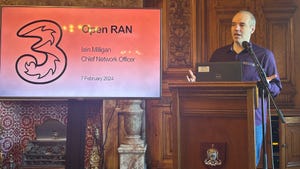Guide to Ethernet Standards Published
Light Reading Report explains why and how they're driving service development
January 9, 2004

A reference work for the developers of Ethernet services has just been published by Light Reading in the form of a report entitled Standardizing Ethernet Services.
The report, authored by Heavy Reading chief analyst Scott Clavenna, maps out the standardization work that promises to drive the rollout of a slew of new Ethernet-based services -- ones that could become successors of today's Frame Relay, ATM, and leased-line services in the long run.
Clavenna says that standardization has become a crucial issue now that incumbent carriers are taking a serious look at Ethernet services. They're seeing a lot of interest from enterprise users but aren't prepared to charge ahead with full-scale deployments until standards have been established in two areas.
One of these areas concerns the services themselves. Carriers need them to be defined in terms that their sales staff and customers are familiar with, so they can compare offerings from different carriers and also compare them with legacy offerings such as Frame Relay.
The other area concerns the ways in which the services will be provided, which is much more complex than might first appear. This is because Ethernet services can be provided over all sorts of infrastructure, including next-generation Sonet/SDH, various flavors of IP/MPLS, and pure Ethernet over dark fiber or wavelengths. Each combination of protocols needs standardization, the report says.
And that's just for starters. There's also a host of other standards under development to make Ethernet "carrier class" -- notably by adding operations, administration, and maintenance (OAM) functions to basic Ethernet technology. On top of that, Ethernet itself is being enhanced with 802.1ad Provider Bridges, 802.1w Fast Spanning Tree, 802.3ad Link Aggregation, 802.3ah Ethernet in the First Mile, and 802.17 Resilient Packet Ring Technology developments.
Clavenna's report takes the reader through all of these standardization efforts, step by step, in a way that puts into context the considerable amount of work going into defining tomorrow's telecom services.
Click on this link to read the report.
— Peter Heywood, Founding Editor, Light Reading
Archives of Related Light Reading Webinars:
Ethernet Access: The Road to Revenues
Ethernet Services: Service Provider Challenges
Ethernet Services: The Economics Behind the Myth
Ethernet Services: What's in it for the Enterprise?
Interworking: Making the transition to MPLS
VPLS: Ethernet Virtual Private Networks, Made Real
GFP Systems: Enabling the Multiservice Edge
Read more about:
OmdiaYou May Also Like










